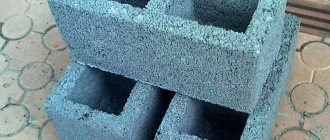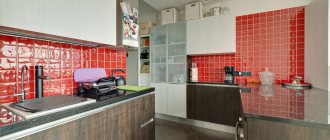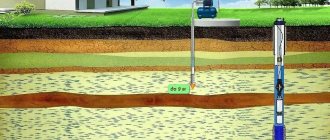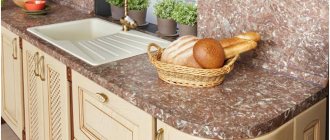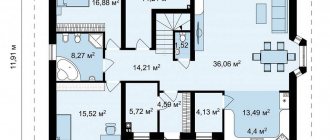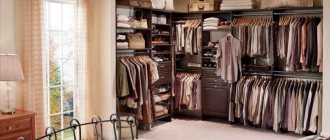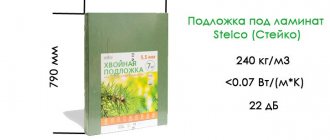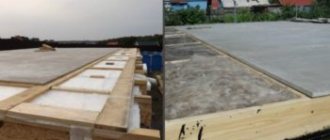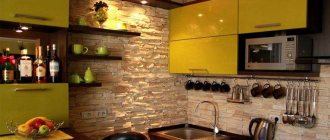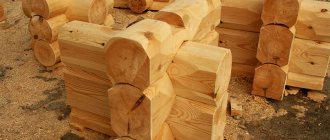The winter season requires additional costs for heating a living space, and the cost of utilities and additional heaters is constantly increasing. An important role is played by heat losses that occur due to insufficient insulation of the room.
You can keep your home warm by covering the outside walls with foam plastic. This material is known to be a good heat insulator. In addition, the appearance of polystyrene is quite good. You can verify this by looking at a photo of extruded polyester foam. Let's study it in more detail.
Description of material
EPPS is extruded (or extruded) polystyrene foam. To put it simply - polystyrene foam, but not the usual pressed one, which easily disintegrates into small white balls, but more dense and durable. The composition of these materials is the same, but EPS has improved characteristics due to a special production method in which the prepared mass is extruded through the profiled holes of extruders. The cross-section of these holes gives the products a given shape.
Extruded polystyrene foam is used to produce slabs, substrates, shells for thermal insulation of pipes, and other products used in construction for insulation and insulation of various structures. As well as decorative elements.
Thermal insulation for sewer pipes Source fis.ru
The most popular and widespread product is slabs. They come in different thicknesses, smooth and corrugated, with smooth and stepped end faces. The latter ensure installation without through joints, which is very important for continuous insulation, as it eliminates cold bridges.
Each manufacturer sets its own sizes of slabs, but most often their width is 600 or 580 mm, and their length is 1000, 1200 or 2400 mm. The number of slabs in a package depends on their thickness.
For reference! In the catalogs of large online construction stores, this material is often listed under the name XPS. This abbreviation is accepted in European countries. Why it is used here is not entirely clear, because almost all products made from extruded polystyrene foam in our stores are represented by domestic brands.
Production technology
Most people not involved in the construction industry think of EPS as being the same foam plastic, but denser. In fact, there are many differences between pressed and extruded polystyrene foam, and they are associated with different production methods.
The raw material for the production of both materials is polystyrene Source dormakomplekt.ru
Before melting, crushed granulated polystyrene is mixed with chemicals that improve the characteristics of the finished product, making it more durable, less flammable, etc. Carbon dioxide or another foam-forming agent is introduced into the molten hot mass, which expands when the pressure and temperature are reduced. The foamed substance is fed into the extruder and squeezed out of it through a hole with the specified parameters.
In the case of slab production, it is rectangular and determines the thickness and width of the finished product. Solid EPS strips are sawed to length after cooling.
Line for the production of extruded plates Source masterplex.rf
Differences from polystyrene foam
EPS granules are much finer than those of polystyrene foam, since the material is exposed to very high temperatures and is formed under high pressure. Their size is tenths of a millimeter, while the diameter of the foam balls is several millimeters.
The dense, finely porous structure makes the material much more durable and resistant to stress. It is not so easy to break and almost impossible to crumble, since the adhesion between the granules is very strong. At the same time, the thermal conductivity and vapor permeability of extruded slabs is even lower than that of foam plastic.
Due to its porous structure, polystyrene foam is highly brittle and brittle Source ppu-prof.ru
Thanks to special fire retardant additives, they resist direct fire longer, and their dense structure does not particularly attract rodents and insects.
Advantages and disadvantages
Polystyrene is a polymer material, plastic, which is given special properties and structure through special processing. Therefore, speaking about extruded polystyrene, what it is and what characteristics it has, it is quite possible to say that it is plastic, but very light and friable. Accordingly, it has all the advantages of synthetic polymer materials. And there are many more advantages associated with the structural features. Let's list everything.
- Absolute moisture resistance - the material is not afraid of exposure to water, upon contact with it it does not collapse, does not rot, or becomes infected with mold.
- Low thermal conductivity, which is provided by sealed cells filled with air.
4 cm thick EPS can replace 85 cm of brickwork Source dy.spb.ru
- Extremely low water absorption: water does not penetrate into the EPS structure and therefore does not affect its thermal insulation properties.
- Durability is also associated with virtually zero water absorption, the absence of moisture in the material, which freezes and expands at sub-zero temperatures and causes internal destruction.
For reference! Water can penetrate inside only to a small depth, through damaged cells located on the surface. But this does not affect the properties of the insulation.
- Low vapor permeability makes EPS the most convenient heat insulator, without requiring additional protection from water vapor in the form of special films.
- Resistance to compressive loads, which increases in proportion to the density of the slabs.
- Low degree of thermal expansion due to changes in ambient temperature.
- Light weight - insulation, more than 90% consisting of air, practically does not increase the load on foundations and other foundations.
- Easy and all-season installation - EPS is easy to cut and attach, you can work with it at any temperature and humidity.
You can insulate buildings with polystyrene foam in any weather Source kraski-net.ru
See also: Catalog of companies that specialize in insulating houses
It is impossible not to mention the affordable price of this material, because of which it is often preferred to other insulation materials, ignoring the disadvantages. And EPPS also has them. Moreover, one and the same property is an undeniable advantage in one situation, and a disadvantage in another.
For example, low vapor permeability makes it practically unsuitable for insulating wooden houses, since polystyrene locks moisture in the wood and prevents condensation from evaporating. Which leads to wooden structures getting wet, rotting and gradual destruction.
The second important disadvantage is the release of substances harmful and dangerous to life and health from the material when it is heated above 70 degrees. By itself, it is considered low-flammable, since when exposed to fire it is difficult to ignite and almost does not burn. But it melts with the formation of toxic smoke, and it is this, and not fire, that is the more common cause of death in fires.
Fire safety certificate EPPS Source tutteplo.ru
Being resistant to stress, extruded polystyrene foam is easily destroyed by certain chemicals of inorganic origin, which include:
- bitumen mastics;
- acetone;
- toluene;
- paints and adhesives containing inorganic solvents;
- petroleum oils;
- impregnation for wood.
Therefore, when waterproofing, painting and other work, you need to carefully monitor the composition of the materials used if they come into contact with the insulation.
Ability to conduct heat
The foam consists of many air-filled polystyrene bubbles in a ratio of 2% film to 98% air. The general appearance of this material resembles foam, which is why it is called expanded polystyrene.
The air inside polystyrene bubbles retains temperature excellently, which is why polystyrene foam is the best heat-insulating material.
Mineral wool has greater thermal conductivity. In order to improve the performance of extruded polystyrene foam in terms of heat retention, it is necessary to increase its density. For example, cover the walls in several layers.
Where is EPS used?
The material described is used in a variety of fields, but we are interested in what EPS is in construction. This is a universal thermal insulation material that is used to insulate almost all parts of buildings:
- walls;
- foundations and plinths;
- floors and ceilings;
- basements and undergrounds;
- roofs;
- blind areas.
It is recommended to insulate EPS walls from the outside or use it as an intermediate layer when laying walls made of bricks and blocks.
Insulated brickwork Source bitrix24.ru
For external wall insulation, both ordinary EPS boards are used, which are then covered with plaster or a curtain wall, as well as decorative sandwich panels that do not require finishing.
It is important! If the house is insulated from the inside with polystyrene foam boards, it is necessary to take into account their low vapor permeability and consider a competent ventilation system. Otherwise, the indoor air will be humid, which will lead to mold.
In addition to insulating the main structural elements of buildings, slabs and other products made from EPS are used for thermal insulation of above-ground and underground pipelines, wells, septic tanks, caissons, cellars, and heated greenhouses. This material is laid on a rough base when installing a heated water floor, and is used as permanent formwork in the construction of foundations and walls.
Thermal insulation substrate for heated floors made of polystyrene foam Source fis.ru
Properties of EPP
Surprisingly, this unique material demonstrates a combination of qualities that people could only dream of before.
- There is practically no water absorption: even when the slabs are completely immersed in water, it only lasts for the first 10 days. Since the cells of the substance are sealed, water in none of its states can pass inside, filling only the side open “honeycombs”.
- Low thermal conductivity of EPP (much less than that of other insulating materials.
- Greater fragility and less ductility compared to foamed polystyrene.
- The ability of a material to transmit light.
- High compressive strength.
- Frost resistance, not subject to rotting.
- Resistance to chemicals: water, acids, oils, caustic alkalis, saline solutions, bleach, alcohol and alcohol-based dyes, fluorinated hydrocarbons, cement, ammonia, CO2, propane, acetylene, butane, paraffin.
- Safety for humans.
How to choose EPS insulation
The main parameters by which the material is selected are the density, size and configuration of the slabs.
Technical specifications
The density of polystyrene foam is an important criterion for selection. The larger it is, the stronger the slab and the greater the load it can withstand without deforming. Products with the highest density are even used in the construction of roads and runways.
The bulk of such products for universal use have a density from 25 to 45 kg/m3; in the marking it is indicated by the corresponding numbers. But there are products of both higher and lower brands. The higher the expected load on the insulated base, the greater this indicator should be.
For example, for insulation of plinths and foundations it is better to choose material of grade 35-40 and higher, but for roofs 25 is sufficient.
General information
Extruded polystyrene foam is a thermal insulating synthetic material created in the fifties of the last century in the USA by specialists from The Dow Chemical Company. It was then that a more modern technique of foaming a special “cocktail” of polymers during extrusion (extrusion through a die) was first used.
At first, the foaming reagents were carbon dioxide and freon. But since 1999, due to the fact that freon has a detrimental effect on the ozone layer of the planet, they began to use a freon-free method for manufacturing the material.
Extruded polystyrene foam
Technical characteristics and types of extruded polystyrene foam
| Index | Polyspen | Polyspen Standard | Polyspen 45 | Control method |
| Density, kg/m3 | 30-38 | 30-38 | 38,1-45 | 5.6 each |
| Bending strength, MPa, not less | 0,4 | 0,4 | 0,4 | 5.8 each |
| Water absorption in 24 hours, % by volume, no more | 0,4 | 0,4 | 0,4 | 5.9 each |
| Thermal conductivity at 25+-5 degrees Celsius, W/m * °C, no more | 0,028 | 0,028 | 0,030 | at 5.10 |
| Toxicity, Hcl 50, g/m3 | T2 moderately hazardous | T2 moderately hazardous | T2 moderately hazardous | at 5.11 |
| Flammability group | G-3 normal-flammable | G-4 highly flammable | G-4 highly flammable | at 5.12 |
| Flammability group | B-2 moderately flammable | B-3 flammable | B-3 flammable | at 5.13 |
| Smoke coefficient | High smoke generating ability | High smoke generating ability | High smoke generating ability | at 5.14 |
| Compressive strength at 10% linear deformation, MPa, not less | 0,2 | 0,2 | 0,3 | 5.7 each |
Video description
Since not all manufacturers indicate this parameter, you need to be able to determine it yourself.
How to do this is shown in the video: The quality of products also varies and depends on the manufacturer’s compliance with manufacturing technology. Some introduce harmful additives into raw materials or do not use recommended components. Sometimes ordinary polystyrene foam is sold under the guise of EPS. To be sure of quality, you should buy certified products manufactured not according to the manufacturer’s technical specifications, but according to GOST.
Advice! You can verify good quality by performing a simple test. You need to break off a piece of material and inspect the fracture site - small regular polyhedra should be visible on it, not balls.
Depending on the place of application, choose slabs with a stepped edge or a corrugated surface, which facilitates the application of a plaster layer on it.
Adding polystyrene chips to concrete
To give the concrete layer additional protective characteristics, granules of extruded polystyrene foam can be added to the solution (the latter can be purchased for about 1000-1800 rubles per cubic meter). This is done as follows.
Foam balls for concrete can be purchased pre-packaged
Step 1. A little water is poured into the prepared container, then dry cement is poured into it. All this is mixed with a mixer attachment until the consistency of thick sour cream.
Mixing the solution with polystyrene balls
Step 2. During the mixing process, polystyrene foam granules are added. The proportions of concrete can be very different - both 1:3 and 1:6.
The more granules there are, the more efficiently the floor will retain heat. But there is also a downside to the coin - this will deteriorate the strength, and the surface will begin to crumble under load. In short, the required ratio of polystyrene foam depends directly on how hard the floor covering should be.
Foam chips (expanded polystyrene granules)
Installation features
Knowing why extruded foam is needed, what it is and what positive characteristics it has is completely insufficient if you decide to install it yourself. The method of fastening depends on the type of insulated surface.
On the floor and blind area
When insulating horizontal surfaces, polystyrene boards do not require fastening. They are laid on a leveled surface - a floor slab or a sand cushion. When installing an insulated blind area or concrete screed, it is recommended to reinforce the concrete layer on top of the insulation with steel mesh.
If the insulation of a wooden floor is carried out followed by the laying of laminate, linoleum and other finishing coatings, then a wooden frame made of bars is first installed on the base, and EPS boards are laid between them. Sheets of plywood or OSB are fixed to the frame.
All joints and seams are filled with foam Source tetrapilon.ru
On the walls
EPS can be attached to vertical surfaces in different ways.
- Gluing.
The slabs can be glued to mineral substrates - to smooth walls made of brick, concrete, building blocks using special adhesives. Many manufacturers of extruded polystyrene foam also produce glue for their installation. In particular, TechnoNIKOL and Penoplex have them. But in construction stores you can find adhesive mixtures of other brands.
Polystyrene foil mats
Foiled polystyrene foam with markings
FPS is able to increase the overall energy efficiency of the facility, retain heat, and significantly reduce the cooling properties of the cement foundation on which the floor covering is installed due to its high sealing characteristics.
The solution to the problem of creating a warm floor today is FPS profile slabs. They have high mechanical strength. On top they are covered with a rigid vapor barrier film. Their surface has a special molding, which allows for reliable and convenient fastening of heating pipes of different diameters. They are laid hermetically, thanks to the side locks, reliable adhesion of the structure is ensured, which eliminates the divergence of the seams. An additional ruler is applied to the sides of the slabs for convenient adjustment of the elements; the embossed lower surface smoothes out unevenness of the flooring and helps absorb noise.
Video description
This video shows how to properly attach insulation to Ceresit CT 83 adhesive:
- Fastening with dowels.
This method is more economical and is used on uneven substrates, as well as on wooden surfaces. Plastic dowels with a large head hold light insulation well, a few pieces per slab are enough. Typically, fasteners are installed in the corners and in the center.
- Combined method.
If the walls are leveled with cement plaster, EPS boards can be glued onto a still fresh mortar and additionally secured with dowels.
- Frame method.
It is used for insulating walls under a suspended ventilated façade. The slabs are placed between the wooden frame guides in the same way as is done when insulating the floor. If the frame is metal, they are mounted on hangers fixed to the wall, and only then the profiles are installed.
Insulation of EPPS facade for finishing with siding Source 918747.ru
Advantages of extruded polystyrene
- The ability to use EPP in the Russian climate, due to its frost resistance and non-rotting.
- The ability to store extruded polystyrene foam outdoors, since it is not afraid of temperature changes.
- Durability of the material: it can last up to 50 years (outdoors).
- Easy to install plates.
- Reasonable price. Almost all Russians will be able to buy EPP.
- A unique combination of material characteristics.
- It is possible to dispense with the use of this plastic without additional hydro- and thermal insulation, additional protection of structures.
- Environmentally friendly material.
- EPP boards are thin (approximately 20mm), compared to 30mm thick polystyrene foam, or 4cm thick mineral wool.
Video description
Watch a video about roof insulation over solid flooring:
On the formwork
To make permanent formwork from extruded polystyrene foam slabs, you will need special plastic ties with which the opposite walls of the formwork are fastened to each other and fixed at a certain distance.
The design of the ties allows you to change this distance and has special sockets for fixing the reinforcement cage bars.
Mounted formwork with a steel frame Source homemasters.ru
How to cut EPS
When carrying out thermal insulation work, EPS boards often have to be cut, cutting out pieces of the desired shape and size. Since the material is quite soft, this can be done with a knife, the main thing is that its blade is very sharp, durable and thin, otherwise the material will crumble.
Advice! To get rid of the strong squeaking noise that accompanies cutting, the knife blade can be periodically moistened with machine oil.
Another suitable tool for cutting is an angle grinder (simply an angle grinder) with a metal disc. The thinner it is, the less debris and dust will be generated, and the cleaner the cut will be.
There are also special tools for cutting foam plastic that work on the principle of thermal cutting - special machines and “hot knives”.
Thermal cutter for polystyrene foam Source allegroimg.com
It makes no sense to buy such equipment for one-time use, especially since a cutting machine can be made with your own hands from nichrome wire stretched between two driven nails. To make the wire glow, the nails are connected to a transformer and voltage is applied to them.
It is important! The thermal method of cutting polystyrene foam can only be used in the fresh air or when using personal protective equipment such as a respirator or gas mask, since when it is heated, toxic substances are released that can be harmful to health.
Homemade machine option Source pochini.guru
Types of expanded polystyrene
There are many varieties of expanded polystyrene on sale, each of which has its own characteristics. So, the following options can be distinguished:
- pressless. Such raw materials are produced by drying polystyrene granules. The process is carried out at a temperature of 80 °C. The cost of this type of material is acceptable for every buyer;
- extruded polystyrene foam is developed through the use of special equipment called an extruder;
- extrusion;
- press;
- autoclave.
Extruded polystyrene foam Source akvilon.ua
Briefly about the main thing
We can say about the EPS board that it is a universal thermal insulation material for all structural elements of buildings. It retains heat perfectly, insulates noise, is not afraid of water and weighs almost nothing. But its scope of application is limited by two factors: toxicity when heated and very low vapor permeability, due to which expanded polystyrene is not recommended for insulating wooden houses. The quality of the material depends on strict adherence to the production technology regulated by GOST. And its installation is quite simple and accessible even for beginners in construction.
Ratings 0
Non-flammability, environmental friendliness and how long does it last?
Construction raw materials called polystyrene foam serve for a long period of time. It does not lose its original characteristics. Various tests have confirmed that it can be used repeatedly, and the quality does not decrease as a result. Expanded polystyrene contains special components. They are called fire retardants. Due to this composition, the material has a low flammability rate. But to say that it does not ignite at all would be wrong.
Insulation of a house from the outside Source realstroyservice.kiev.ua
Kinds
Today, customers are offered several brands of expanded polystyrene. They differ in production method and technical characteristics.
Pressed polystyrene
Domestic material, produced under the brands PS-1 or PS-4.
It has a high density (60-600 kg/m3). Its area of application is radio engineering.
Pressless material
PSB, PSB-S – brands of expanded polystyrene from Russian manufacturers. The material has high physical and chemical properties. Its scope of application is facade insulation.
Pressed and non-pressed materials have one common drawback: at low temperatures, when moisture gets between the granules, they will begin to collapse.
Extrusion insulation
This type of expanded polystyrene is most often used for thermal insulation of facades. It is very durable and strong, its service life reaches 80 years.
But unlike pressless material, it has a significant drawback: it contains residual styrene, which is harmful to health.
Domestic brands of extrusion insulation are “Penoplex”, “TechnoNIKOL”.
Working with floors
Here the slabs are laid without additional fixation.
Floor insulation Source yandex.net
Preparing the rough foundation is similar for walls and ceilings. The difference is that the floor must be covered with waterproofing. As a rule, this is a technical polyethylene film with a thickness of 150 microns. A damper tape must be laid around the perimeter.
Laying of extruded polystyrene is carried out in 1 or two 2 layers with offset joints of each subsequent row. The joints are filled with polyurethane foam. If the floor is leveled with cement mortar, then a reinforcing mesh is laid. With heating systems, a heat-reflecting film is attached before this. There is no need for additional layers for sheets of gypsum fiber board, chipboard or plywood.
Rules for carrying out installation work on walls and ceilings
Rigid lightweight boards are used for thermal insulation of horizontal and vertical structures inside and outside the building, in heated and cold rooms. The material is fixed to walls and ceilings using the adhesive method. The sequence of actions is as follows:
- cleaning the base from old finishes and flaking elements;
- removal of foci of biological damage and rust, followed by protection from reappearance with antifungal and anti-corrosion agents;
- strengthening walls and ceilings by reinforcing cracks and corners, impregnating them with strengthening primers;
- leveling the surface with plaster followed by re-priming,
You need to choose a specialized adhesive for polystyrene foam, and it is important to pay attention to the working thickness of the solution (or dry residue). Apply the composition to the slabs in an even layer using a comb. The size of the teeth is determined by the parameters of the permissible thickness (multiplied by 2). To ensure that the end edges remain clean, which is necessary for a tight fit, the glue is applied within 1.5-2 cm of the edges.
Adhesive for polystyrene foam Source davran.ru
The next step is additional fastening of the polystyrene foam boards to special dowels for insulation. This is a fastener with a wide plastic cap that presses and holds the blade at the base in a given position. It is better to perform fixation after the glue has hardened, so as not to create unnecessary voids that can become cold bridges.
The gaps between the edges of the slabs can be filled with polyurethane foam. The material has similar characteristics to expanded polystyrene, so you don't have to worry about thermal expansion or adhesion. The main thing is to follow 2 rules: the polyurethane foam must have low expansion, the procedure is performed only after the glue has dried.
It is worth paying attention to another way of fixing polystyrene foam to a flat plane - using polyurethane foam or glue in the form of cakes. Such options are acceptable, but it is better to properly prepare the surface and apply the adhesive mass in a continuous layer. This way you will get the highest quality and most durable results.
Application of polyurethane foam Source sdelai-lestnicu.ru
